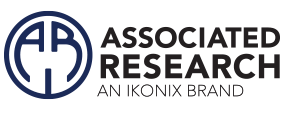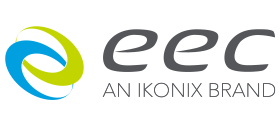MEDICAL DEVICE CASE STUDY
Applications Consulting / 2 Days
May 2018
MedTEST Setup and Install – Infant Scales
A medical device manufacturing company, having recently purchased an Associated Research MedTEST System complete with OMNIA® II and Autoware® 3, wanted to consolidate and automate their electrical safety testing (EST) from a multiple instrument setup to all-in-one OMNIA II Model 8207. Multiple teams within the organization required training on electrical safety testing knowledge and safe workstation best practices.
Consultation Prerequisite
A medical device manufacturer of infant weight scales used in hospitals requested Ikonix USA’s Applications Consulting Services. The manufacturer is required to comply with the Medical Electrical Equipment Standard 60601-1, 3rd Edition. The team had a few goals to accomplish with our training; they wanted to enhance their employee’s electrical safety testing knowledge, equipment operations, and ensure proper safety compliance test performance. They had requested our assistance in reviewing their Installation Qualification (IQ) and Operations Qualification (OQ) documentation.
The team’s other objective was to modernize their electrical safety testing routine from multiple units down to an all-in-one model. Current operations documentation showed use of old equipment, which may no longer be serviceable by its original manufacturer.
Applications Consulting Proposal
After reviewing the medical manufacturer’s requirements, a 2-day Applications Consulting package was proposed.
Day 1:
- Introduction and brief overview of electrical safety tests
- Review of current test procedures and test equipment
- IQ/OQ Documentation walk-through
- Autoware3 Software installation and activation
- OMNIA II 8207 – 8207 Installation – 8207 Operation
Day 2:
- Autoware3 operation – review all features and create sample test routines
- Autoware3 and OMNIA II 8207 interfacing
- Instrument features, functions, and processes
- Device Under Test (DUT) connections and sample testing
- Review and Questions
KEY POINTS
- Electrical Safety Test Knowledge: Hipot, Ground Bond, and Earth Leakage for Medical Equipment 60601-1, 3rd Edition
- Setup and Installation
- Proper equipment setup and operations
- Performing EST Test on medical equipment
- Review IQ/OQ/PQ
- Train operators and staff on safe workstation practices
Applications Consulting Visit
The IQ/OQ documentation walkthrough covered the importance of each test parameter and detailed failure messages that can be expected when performing electrical safety tests. Since this was a medical equipment manufacturer, special attention was given to covering leakage current testing and how it related to the 60601-1 test standard. Review of testing documentation revealed multiple opportunities for improvement including; additional leakage current testing, Enclosure, Patient (Applied Part), Patient Auxiliary, and MOAP (Mains On Applied Part). We updated their procedures to assume future testing needs would evolve into more rigorous test routines.
Ahead of schedule on day 1, we covered how to connect their product for proper testing. We performed a sequence of tests according to their current procedures. A few inconsistencies were discovered, which involved a recent change to testing parameters that were required to meet a hardware change. This change did not necessarily meet the requirements of the testing according to 60601-1 standards. The team’s engineers made a note to discuss the changes with the organization’s product engineers. Some on-site design engineers took note and were interested in additional information from the standard, so we provided more detailed standard information, such as the proper voltage for Hipot testing with input line filters that have large capacitors.
On day 2, the team learned about their custom MedTEST system and operations as well as Autoware3 instrument control software. The operators learned about the importance and requirements of all electrical safety testing. Best practices in workstation safety were covered and it was stressed that the hipot equipment can potentially produce hazardous levels of voltage. We covered additional methods of safeguarding operators from the dangers of electric shock.
Having time left on day 2, we recommended some operator training, which included an electrical safety testing overview and safe workstation practices. We trained close to 20 operators and service personnel from the production floor during this training session.
Consultant Commentary
Testing according to standards is a major concern for medical equipment manufacturers. Accuracy and safety, while performing electrical safety testing, is paramount for all manufacturers. Our Applications Consultation plan for this organization covered both the requirements and also advised on their current set of documentations for IQ/OQ and PQ.




